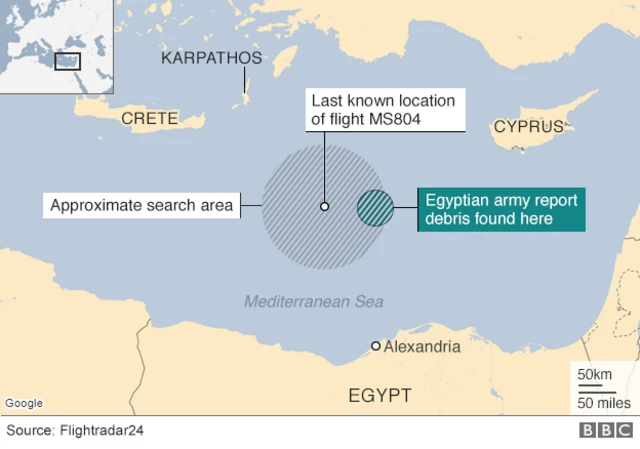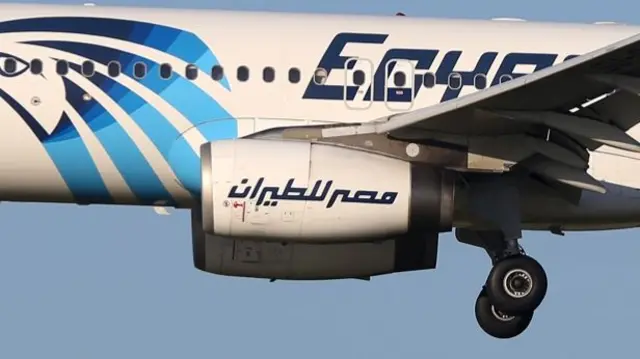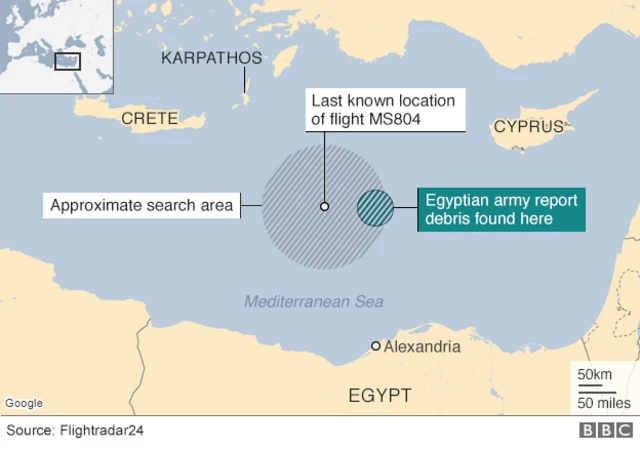We're pausing our live page for nowpublished at 18:32 BST 20 May 2016
Here's a summary of the latest developments:
- Human remains and aircraft seats are among the debris found floating in the Mediterranean Sea
- Search teams are combing the waters in an area with a 65km (40 mile) radius
- An oil slick has been spotted by satellite, but there is no confirmation that it has come from the EgyptAir plane
- It remains unclear why the plane crashed
- Here is our main story
- You can read a summary of what we know so far about MS804
- You can also keep up to date with our coverage on BBC TV and radio.







